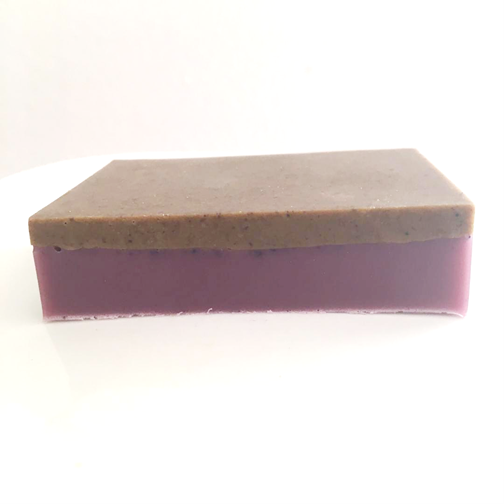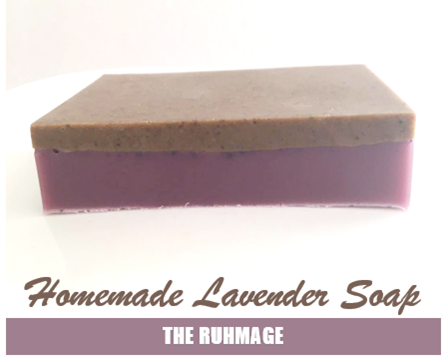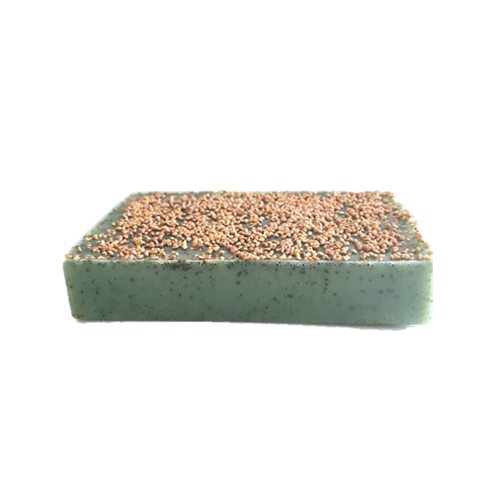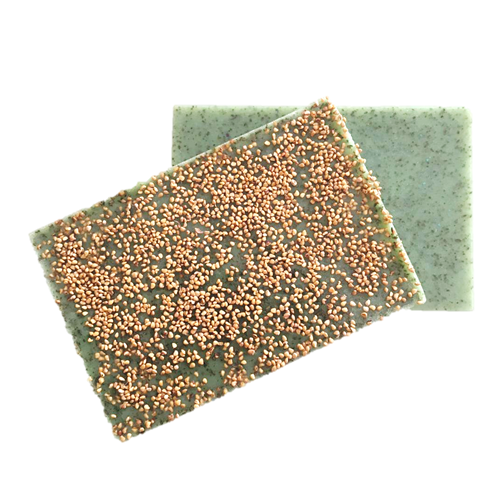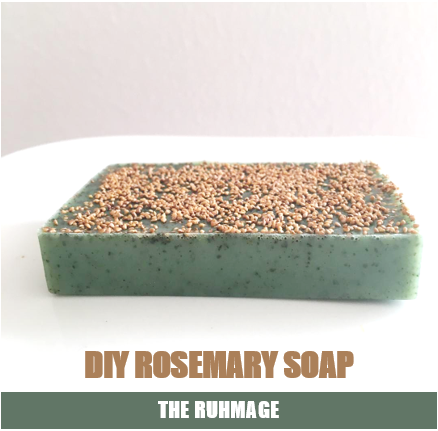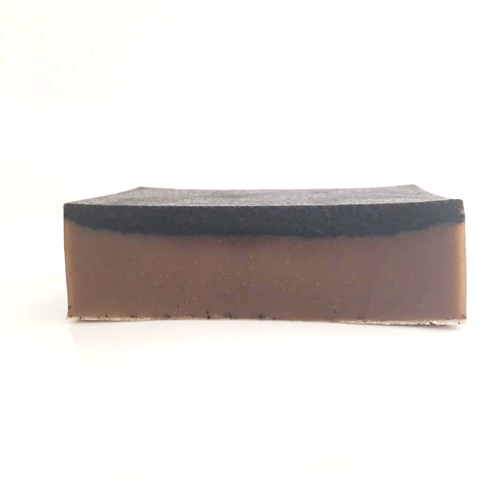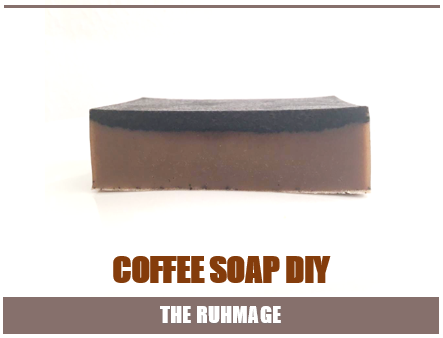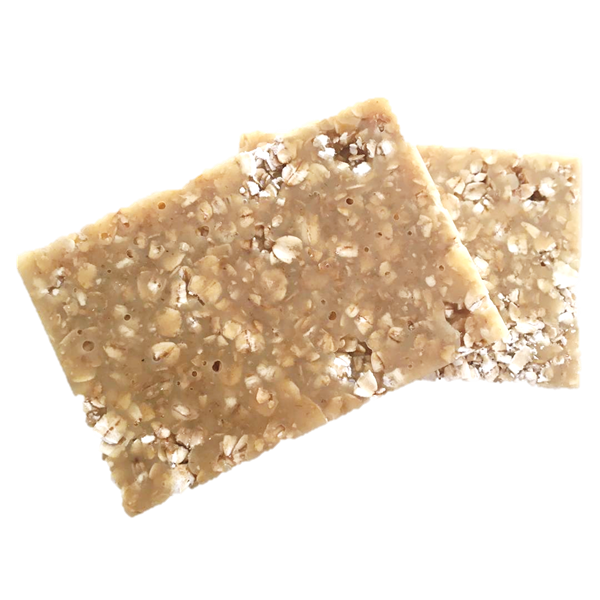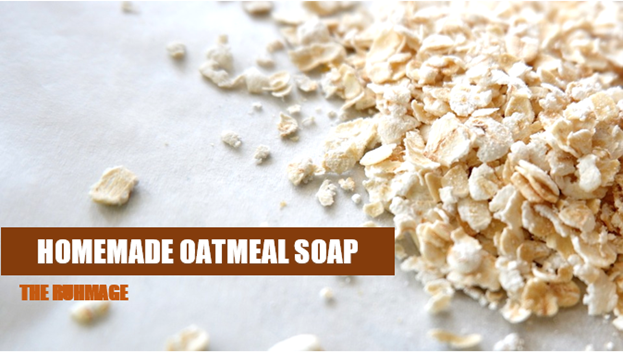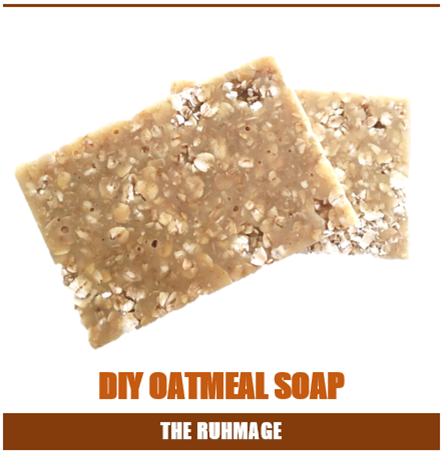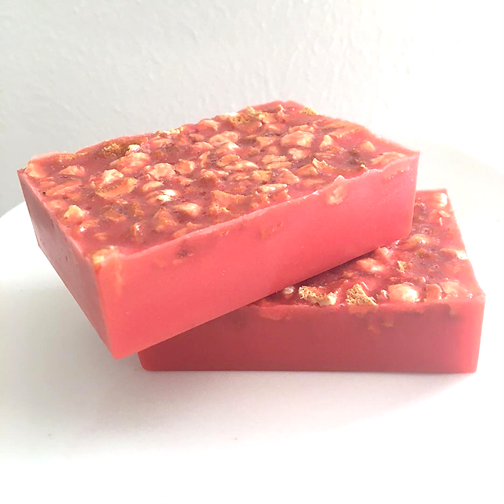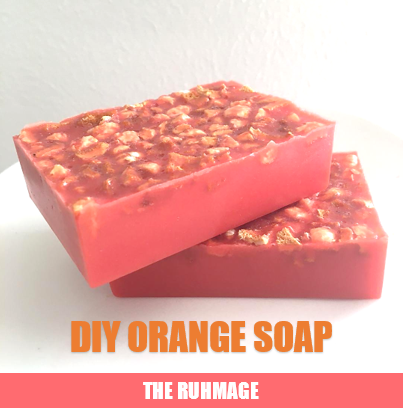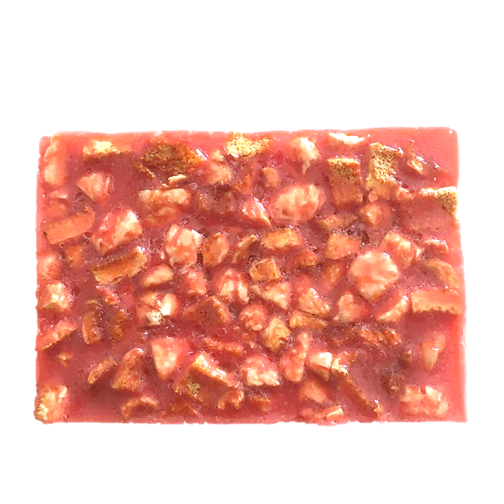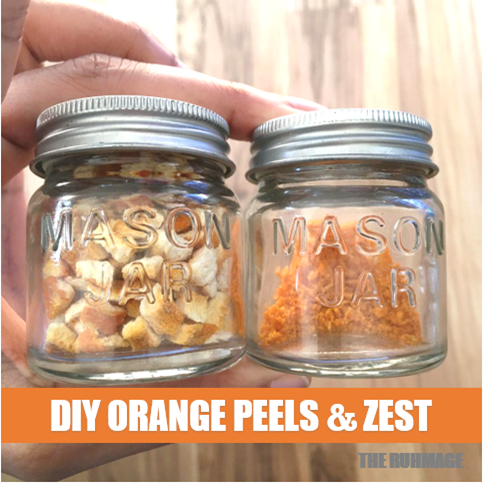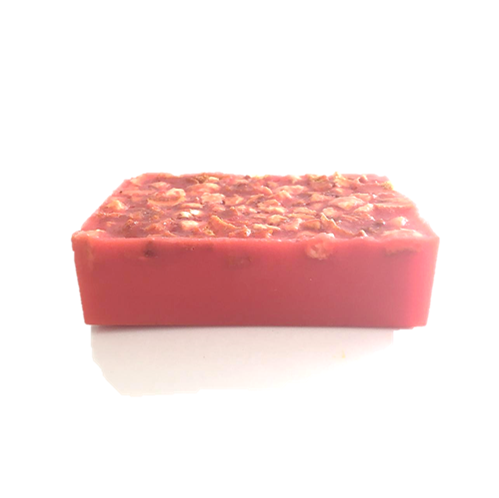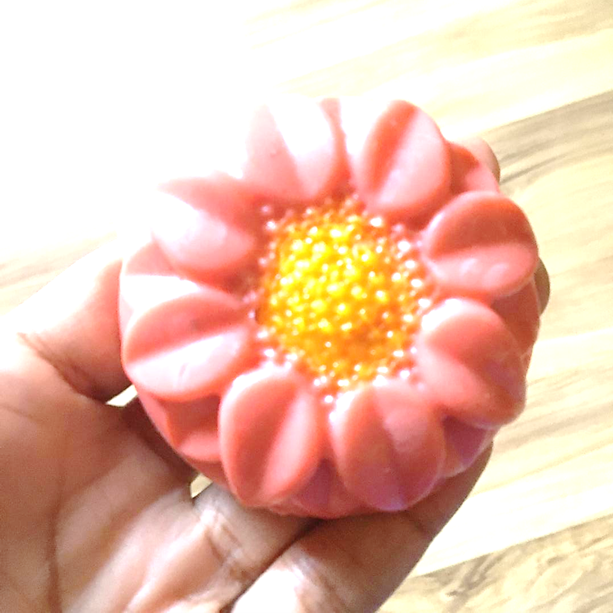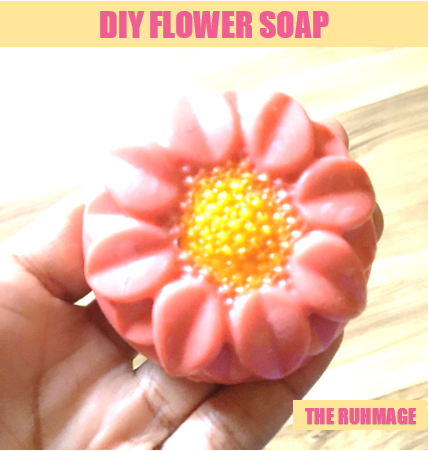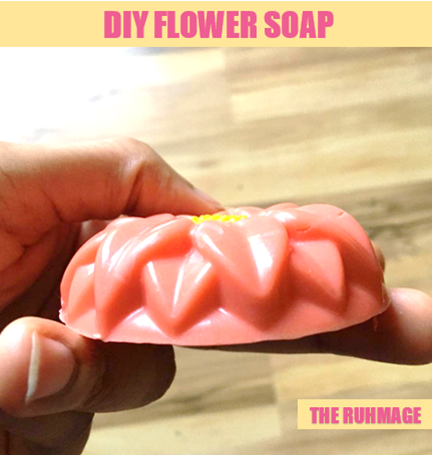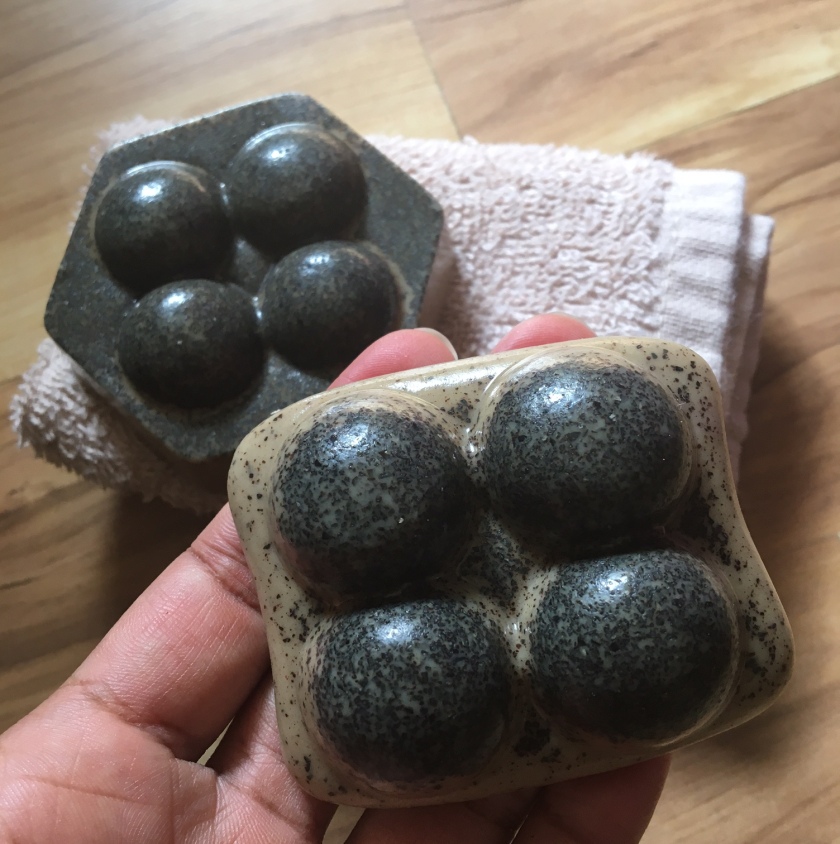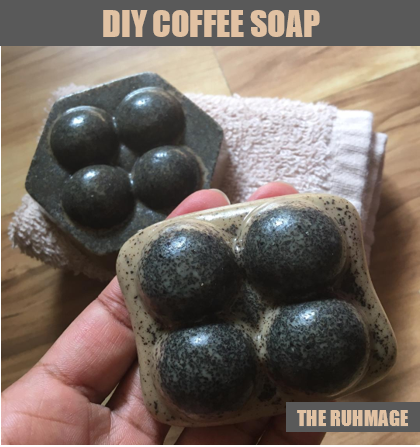This homemade lavender soap is a wonder smelling exfoliating DIY lavender soap recipe! It is a two-toned soap with one side being all about the creamy lather and soapy fragrance while the other side is about the gentle exfoliation. The complete recipe and instructions are provided below. But, for now, let’s talk about the different options for making this DIY lavender soap recipe.
Fragrance
Since this is a homemade lavender soap recipe, you probably already guessed that lavender is the fragrance of interest. However, you may be surprised to know that both dried lavender buds and a wonderful smelling lavender essential oil is used to scent this DIY lavender soap recipe. Lavender is a calming essential oil that helps alleviate stress. You can also make the lavender lotion bar recipe with the lavender essential oil.
Soap
You can use whatever melt and pour soap base that you like. Just remember that a white soap base with give you a pastel version of whatever soap colorant you decide to use while the clear melt and pour soap bases will be more true to color. This DIY lavender soap recipe is made with a mixture of white soap base and clear brown soap base. So, with the clear brown soap base, the purple soap colorant turned out to be more true to color.
Colorant
One of the colorants used for this two-toned DIY lavender soap recipe is a purple powdered pigment. The top brown part is an all natural color that results from the lavender powder. I used a coffee grinder to grind my own lavender buds so that it still has a little texture. However, you can find lavender powder online, but the powder may not be as textured for an exfoliating DIY soap.
Exfoliant
The ground lavender buds make a very gently exfoliant for the skin. It also slowly turns the soap a darker and darker tan color as the soap ages. The lavender buds are mostly for exfoliation, not for scenting this homemade lavender soap. The lavender buds can also be used in the lavender lotion bar recipe.
Yields: 1 DIY SOAP BAR
Supplies:
- Rubber Soap Bar Mold (I used this one.)
- Metal Measuring Spoons
- Soap Cutter (Or A Large Knife)
- Pyrex Glass With Handle
- Spatula
- Small Food Scale
- Coffee Grinder (For the Lavender Buds)
Ingredients:
- 2 oz. White Soap Base (1oz for Ground Lavender)
- 1 oz. Honey Soap Base
- 1/4 c. Dried Lavender Buds (or, Powdered Lavender Buds)
- 1 tsp. Hungarian Lavender Essential Oil
- Purple Mica (Ultramarine Pink)
Instructions
- Prepare your soap mold for pouring and drying the soap. If the mold needs to be transferred after you pour the soap, place rubber molds on something rigid to make transferring the mold easier.
- Next, cut and weigh the melt and pour soap base.
- Place 1 ounce of the white soap base in the microwave to melt.
- Then add about 1 tablespoon of ground lavender buds.
- Stir well and pour into the mold. Let dry completely before starting the next step.
- Now cut the remaining soap into small equal sized pieces in preparation for the microwave.
- Place the chunks of soap in the glass measuring cup and microwave the soap until melted. Microwave the soap in 30 – 40 second intervals to keep from boiling and drying out the soap.
- Stir the melted soap well making sure that all of the soap melts. Then add and stir in the colorant. (Some colorants must be mixed in at a relatively lower temperature to blend evenly. But with a two-toned soap, it should not make much of a difference.)
- Now add the lavender essential oil. Stir well.
- Lastly, pour the homemade lavender soap into the molds over the dried ground lavender but half.
- Let the soap mold sit until the bar becomes firm.
- Once your DIY lavender soap is cool and solid, you can unmold the soap and use it immediately.
Conclusion
This delightful smelling homemade lavender soap is all I have for for now! You know where to find more DIY Soap Bars for Beginners! For more help, read how to make homemade soap bars for beginners without lye. I hope you enjoy making and using this DIY lavender soap recipe soon!
